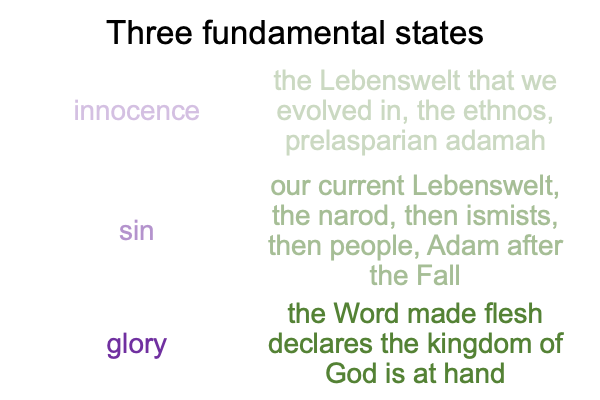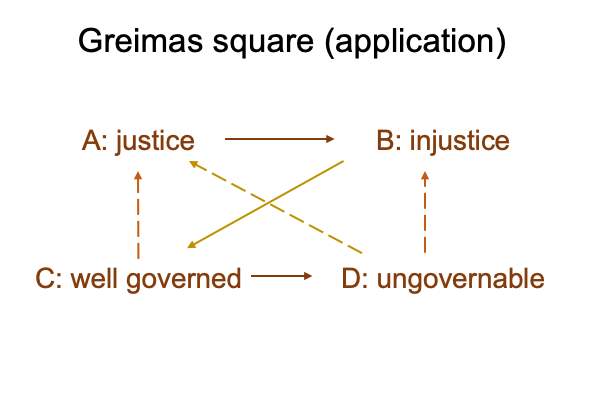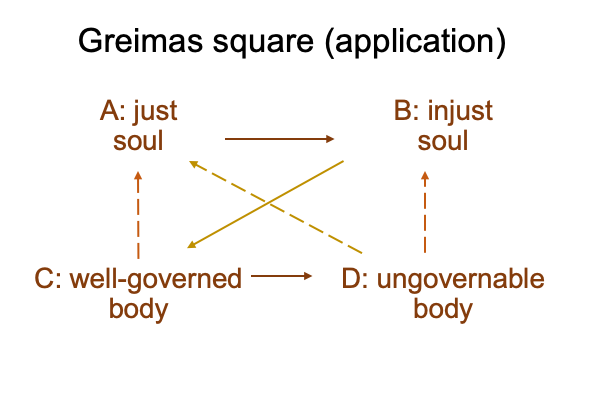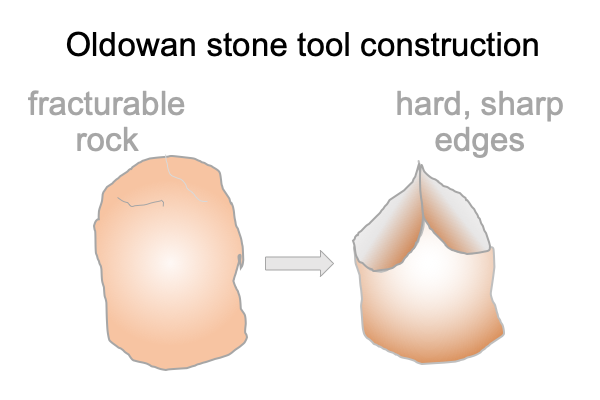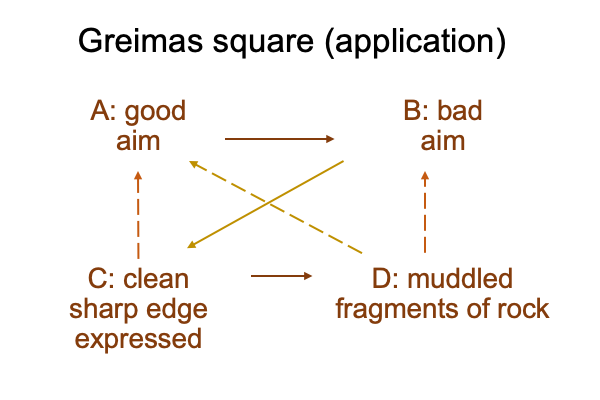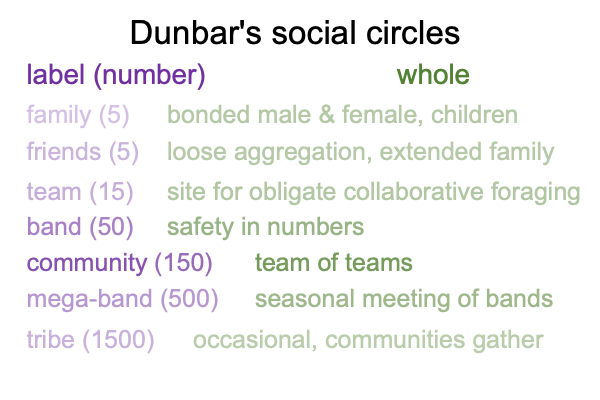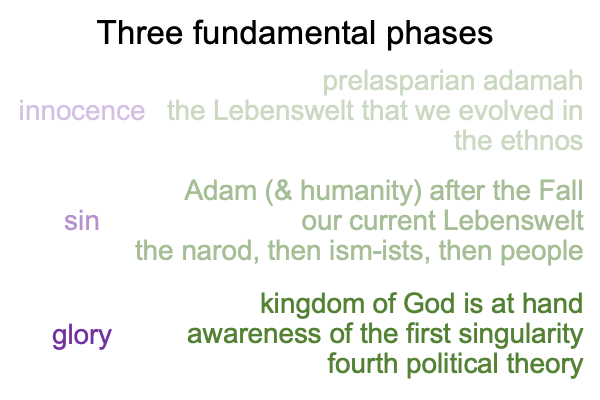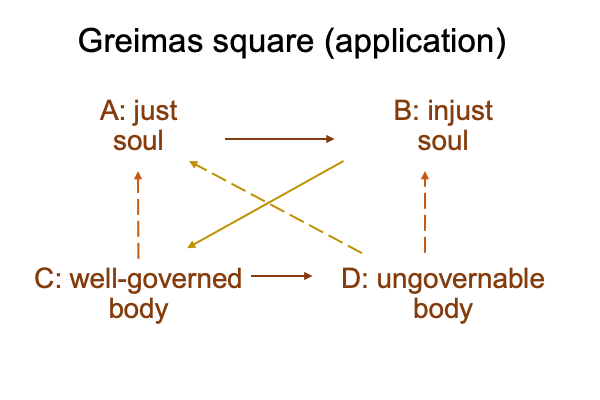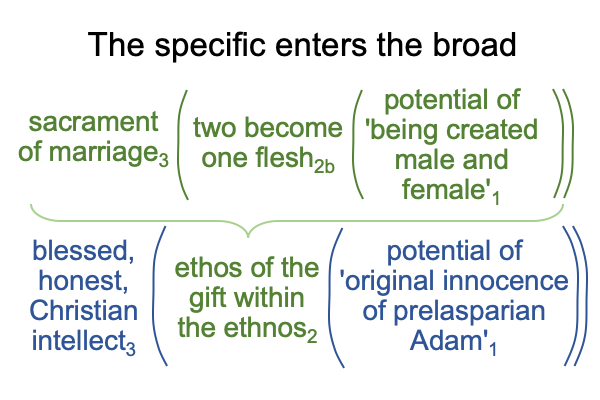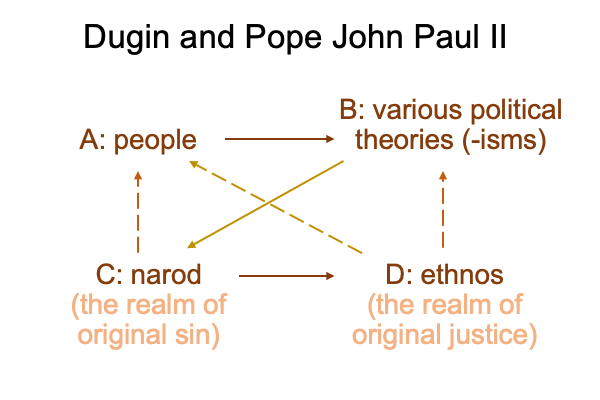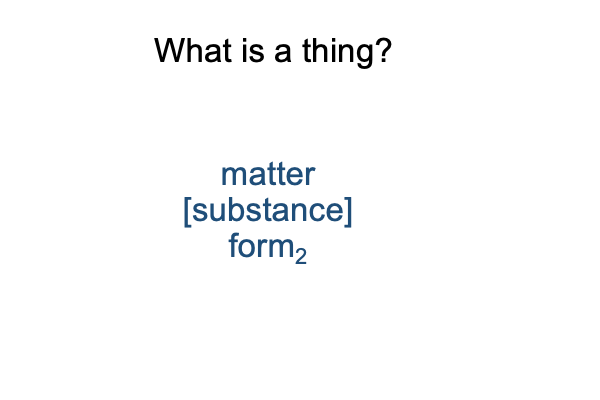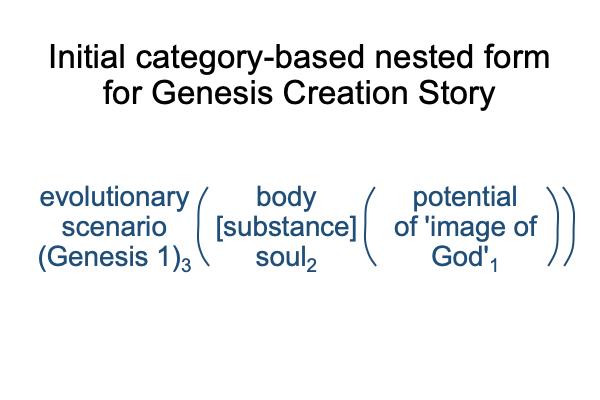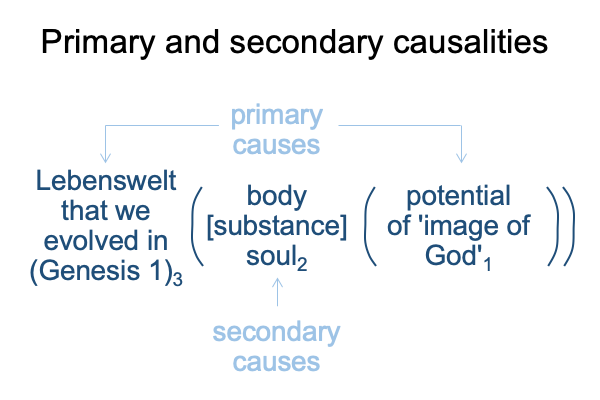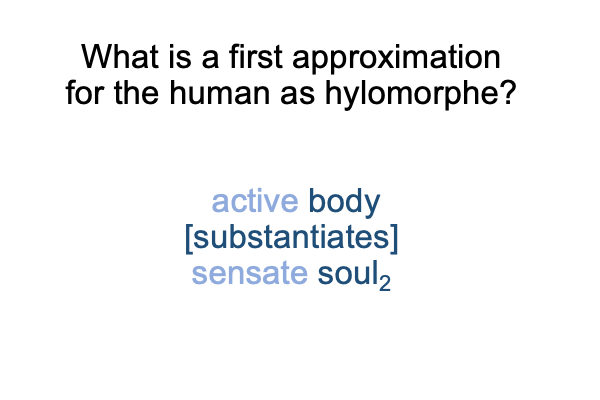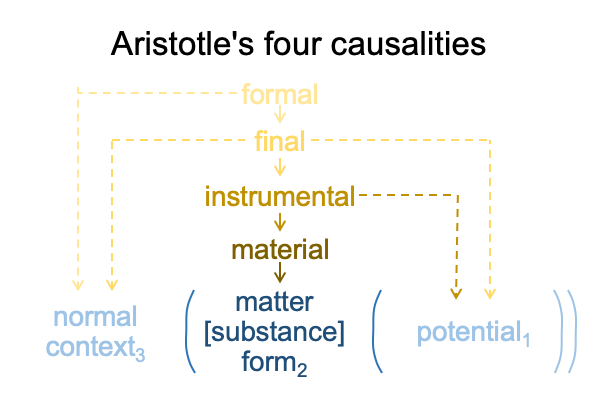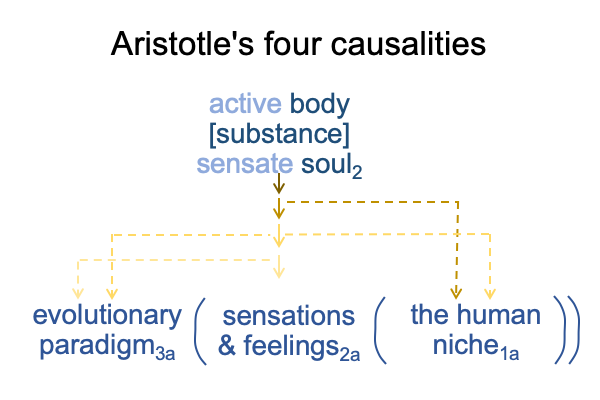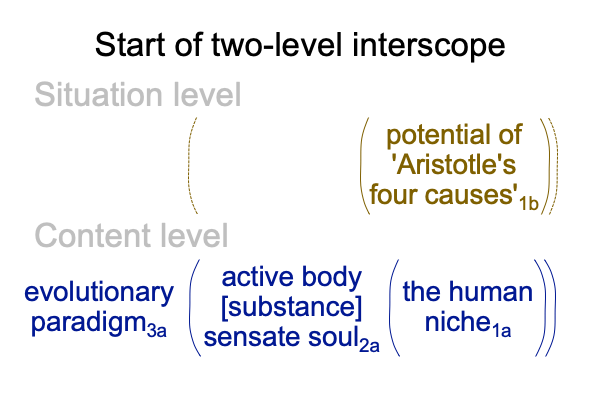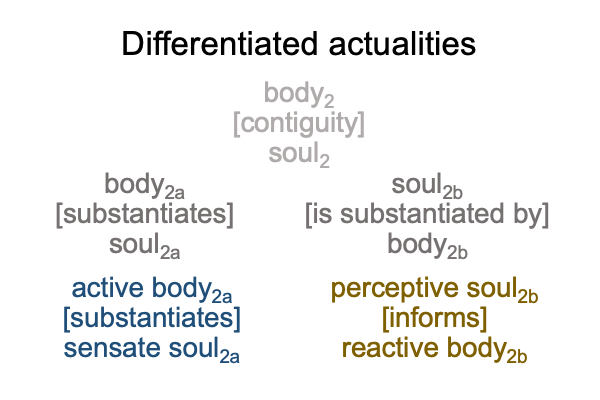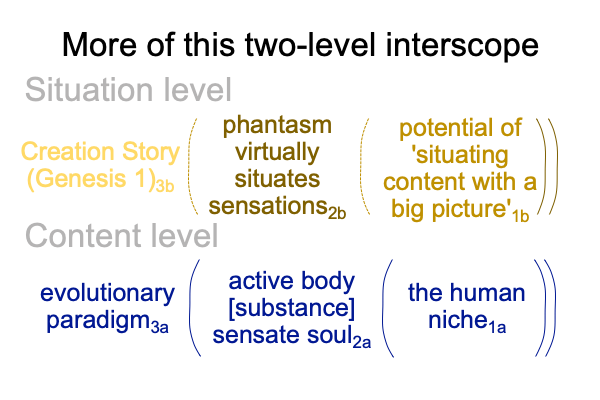Looking at Brandon Wanless’s Article (2023) “…on the State of Original Innocence” (Part 7 of 12)
0051 Finally, what is the question that Wanless addresses?
At the end of the first section, the author specifies.
This article addresses the manner and degree in which the late Holy Father integrates the theology of original justice (as formulated by Aquinas) in his proposed theology of the body.
This answer comes after noting that the first chapter of Theology of the Body contains no reference to Aquinas at all. Instead, the pope relies on “biblical teachings” found in the Genesis text.
0052 Perhaps, the question should be phrased like this, “How does the Holy Father integrate the theology of original justice into a biblical teaching that is embodied in a fairy tale about the emergence of our current Lebenswelt, out of the Lebenswelt that we evolved in?”
Of course, this is an impossible task. But, isn’t that what popes (following Christ) ask their flock to accomplish?
0053 Pope John Paul II cannot clearly state what he is asking for, because no one (until Razie Mah) scientifically ideates a twist in human evolution, now called “the first singularity”. Our current Lebenswelt is not the same as the Lebenswelt that we evolved in. Hominin evolution occurs in a Lebenswelt associated to hand and hand-speech talk. Then there is a twist, followed by a Lebenswelt associated to speech-alone talk.
Indeed, all political theories (B) are exercises in explicit abstraction made possible by speech-alone talk.
0054 Pope John Paul II stands opposed to all political -isms (B).
So does philosopher Alexander Dugin.
0055 Thirdness is the triadic realm of normal contexts, signs, mediations, judgments and… yes… gifts.
This brings me to the following comparison, in the category of thirdness.
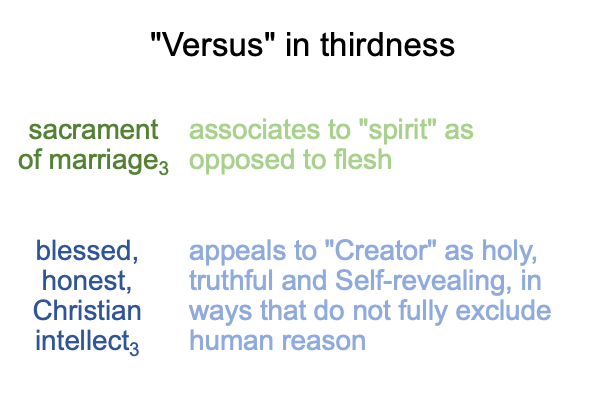
0056 The logics of thirdness include exclusion, alignment and complement.
The sacrament of marriage3 excludes other normal contexts3 that reject the biblical teaching that the bonded male and female become one flesh2. The sacrament3 associates to the pope’s use of the word, “spirit”, as opposed to “flesh”.
Along the same lines, the blessed, honest and Christian intellect3 excludes normal contexts3 that cannot recognize that the gift is one of the triadic relations that humans adapt to2.
0057 I wonder whether, if the now deceased pope purchased a copy of Mah’s e-book on the first singularity, he would be inclined to ask, “Can Aquinas’s theology of original justice be used to account for the noumenon, the thing itself, of human evolutionary history?”
That is a very good question.
What happens when a theology aiming to describe the conditions of the prelapsarian Adam is applied to the prelapsarian adamah, the ethnos, who cannot avail themselves to the explicit abstractions permitted by speech-alone talk, yet nevertheless evolve implicit abstractions that, miraculously, cohere to Aquinas’s proposal of original justice?
0058 In terms of poverty, even the poor within civilization are wealthier and more powerful (in terms of money and control) than the wealthiest and most powerful persons in the Lebenswelt that we evolved in.
Evidence?
Consider paleolithic burials in Europe, where elaborate grave goods adorn the corpse of what?… a child?… a person who suffered immensely from some ailment?…
0059 In terms of the joy of living, no civilized simulacra can manufacture a joy of living comparable to the ethnos. Remember, the ethnos practice hand-talk and hand-speech talk. So, when someone talks, others don’t just listen, they watch and witness. At first, hominins evolve to be productive and have fun. Then, hominins evolve to be more than productive and to have more than fun. All these adaptations further actualize the potential of the ethos of the gift.
0060 After the first singularity, a narod may come close to the way of being of the ethnos, with their festivals and their funerals, their work-alongs and their sing-alongs, and their banter and their gossip. But, once an intellectual steps on stage and tries to explain why the narod, even though apparently happy, are so poor, the path is set to generate a people, who follow the laws, who build a civilization, who cooperate even while being sheared by rapacious authorities, and who are finally harvested like the sheep that they are.
0061 Biblical teaching intimates that our current Lebenswelt is not the same as the Lebenswelt that we evolved in. The pattern precisely matches Dugin’s political theological distinction between narod and ethnos. A fundamental transition has taken place. The cruelty, radicalness and monumentality of the transition manifests in time. The explicit abstractions of -ismists turn traditional word meanings into technical exercises and then into parodies of what they used to signify.

